NOTE: This is a story about the film ‘Lonely are the Brave,’ based on the book, ‘Brave Cowboy,’ by Edward Abbey and my efforts to find, in 2014, the original film locations from the 1961 production. In searching for those sites, I did not initially seek additional information from other sources; I wanted to find these locations–or at least attempt to–on my own. In most cases I was successful, but other scenes stumped me. If you know the Albuquerque area and can offer additional information, or corrections, I welcome your observations. Finally, this story will only have meaning to you if you’ve seen the film. If you haven’t…stop. Rent or buy the DVD and watch it. Then come back here for the rest of the story—volume one…..JS
I was a kid, maybe ten or eleven and at home alone one evening with a bowl of popcorn and the TV. I’d turned the channel to NBC to catch that week’s presentation of “Saturday Night at the Movies.” It was a western, a film I’d never heard of, ‘Lonely Are The Brave,’ starring Kirk Douglas and Walter Mattheau. As the opening scene played out, I assumed it was set in the Old West, that it was another ‘Wyatt Earp/Gunsmoke’ kind of movie. But when Douglas, as ‘Jack Burns,’ leans back to savor his hand rolled smoke and offer a few soothing words to his horse Whiskey, the desert silence is disrupted by something out of place. Burns reluctantly lifts his eyes to the sky, not out of surprise but bitter resignation, to the sight of a squadron of screaming jet aircraft, their contrails fouling a faultless New Mexico sky.
This story wasn’t taking place in 1882…this was 1962—the “Modern West,” and Jack Burns was trapped in it. The film was about a world he loved—his beloved West—but a world that was fast spinning out of control. Early in the film, Burns tries to explain himself:
“Basically you’re still an easterner…A Westerner likes open country so he has to hate fences and the more fences there are, the more he hates them…It’s true. You ever notice how many fences there are getting to be? And the signs they got in ‘em…No hunting. No fishing. Private property. Closed area. Get moving. Go away. Get lost. Drop dead…And they got those fences that say: ‘This side’s jail and that’s the street.’ Or ‘here’s Arizona and that’s Nevada.’ Or ‘this is us and that’s Mexico.’
But Jeri Bondi, the wife of the man Burns hopes to break from jail, sees Jack as an anachronism in a society that discourages anything resembling individualism…
“Jack, the world you and Paul live in doesn’t exist…maybe it never did. Out there is the real world and it has real borders and real fences, real laws and real trouble. If you don’t go by the rules you lose…you lose everything.”
Jack replies, “A fella can always keep something.” In the rest of the film, Jack Burns tries to do just that.
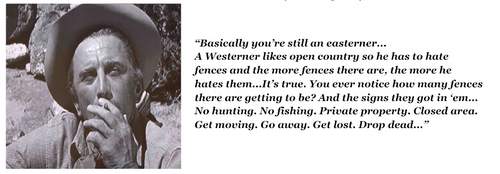
Why, as a ten year old, did all this resonate so deeply with me? For the next two hours, I sat transfixed by the story, by Burns’ loathing of a society hellbent on destroying everything he held sacred, and his solitary escape attempt over the mountain, by the film’s disturbing last scene. Somehow, for reasons I still can’t explain–except that maybe this is how my DNA was wired from birth—I came to identify with the film and Jack Burns in a profound way—it would shape my life. More revelations lay ahead…
A decade later, I had finally seen the West, first with my family, and later on my own. As a young adult, it was my obsession. I knew it would become my home. Along the way, I discovered the author Edward Abbey, and I read ‘Desert Solitaire’ again and again. Trapped for the time being in Kentucky, I still kept my watch on mountain time. And I sought out other Abbey books; I learned of a recent collaboration with the great photographer Philip Hyde.
I was as broke as I’ve ever been but somehow found the $23 I needed to buy Abbey and Hyde’s ‘Slickrock.’ I opened the large format book to the end piece, to the author biographies. There was a photo of Ed, the first I’d ever seen…I thought, ‘yep, that’s just how I thought he’d look.’ I scrolled down the text, which cited some of his novels. I read, “…including ‘Brave Cowboy, upon which the film ‘Lonely Are The Brave’ was based.” Of course…the complete circle. It was perfect.
* * *
In the years following that first viewing of ‘Lonely are the Brave,’ the only way to see it again was to keep a close eye on the tv movie listings; there was no chance then, that the film would re-appear in theaters. Even after the Age of VCRs brought films into our living rooms, it wasn’t until 1992 that Universal finally released the film as a video cassette, modified of course, to fit the small screen. ‘Lonely are the Brave’ was finally released on DVD in 2009, in its original wide-screen format.
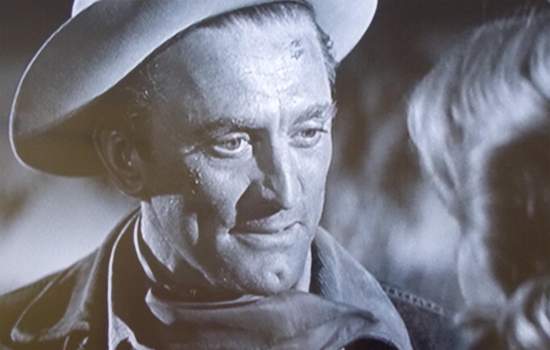
Once I could watch the film on demand, the landscape of that film became as familiar to me as my own backyard. I had learned years earlier that the setting of the film, in and around Duke City, New Mexico, was and always has been, in fact, a moniker for Albuquerque and environs. But I always had to remind myself that the ‘West” Jack Burns longed for, and the changes that had chased him up the side of the Sandia Peak occurred years ago. I first laid eyes on the American Southwest years after Burns lamented its death. If Burns feared all was lost in 1962, what would he think of the land now in 2014? And more specifically, what had happened to the very ground Burns had sought refuge in, and even employed as his ‘escape route’ from civilization and the long arm of the law, so many years ago?
I decided to go back to New Mexico and have a look.
LONELY ARE THE BRAVE…SCENE 1…Camp
The opening scene of the film unfolds on the scrub desert below The Volcanoes, or the Three Sisters, on the far west edge of town. Finding them is easy—they’re visible from practically any point in the valley. Finding the exact location is more difficult.
For years, I’ve been photographing ‘Then & Now’ or ‘Before & After’ images. It’s always a matter of finding two or more geographic features, at varying distances from your vantage point, and aligning them in relation to each other and to the photographer. This scene led us north of the Three Sisters, up Unser Blvd to Rainbow Blvd and the Volcano Vista high School complex.
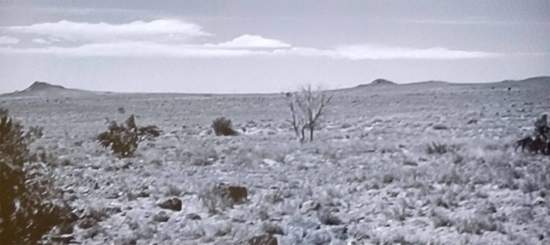
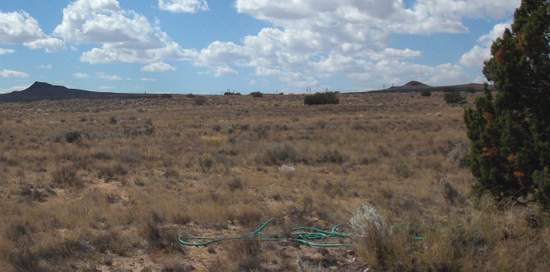
Just beyond the parking lot, Tonya and I spotted a very old dirt road. At a point a quarter mile west of the pavement, we found a junk yard of sorts. It was near here that the first scene of the film was shot. The view to the Volcanoes is still remarkably the same. It is perhaps the only part of the landscape, however, that is still intact. On all sides, housing projects are moving in, getting closer by the month. Our Google street view map, in fact, failed to show some of the new paved roads that have been added in just the past couple of years. Soon jack Burns’ campsite will be lost to suburbia…
SCENE 2…the Volcanoes.
Still, just east of The Volcanoes, this film location lies within the boundaries of Petroglyph National Monument, a 12,000 acre federally protected area on the west side of Albuquerque and south of the opening scene by a couple of miles. We parked at the Monument parking lot and followed a heavily marked designated trail that, in fact, was edged by a steel barrier. The trail clung to the bottom of a rocky talus slope and seemed determined to keep us from getting on top of the mesa where we needed to be. We had no choice but to duck under the railing and pick our way through the rocks to the mesa above. As we faced the Volcanoes, it became apparent that the film site we sought was on the far side of the mesa, on the other side of the horseshoe, as it were. An hour later, as we studied images from the film that I’d printed before we left, we finally came within inches of the spot. On this day, Tonya filled in for Kirk Douglas.
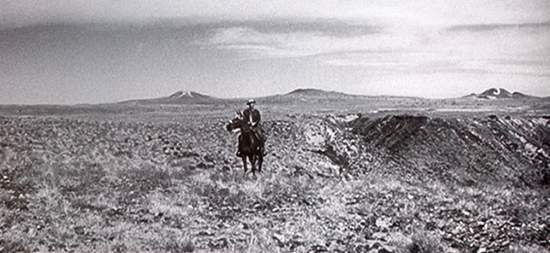
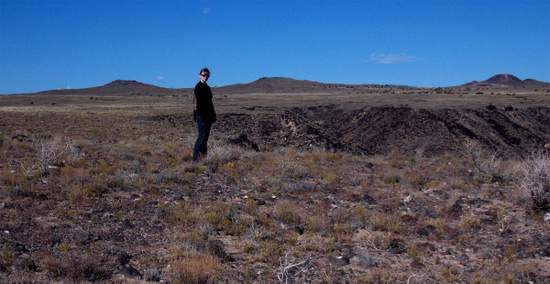
We made our way back to the road via the far side of the horseshoe mesa. When we ducked under the fence on the park boundary we realized we’d been in a ‘CLOSED AREA,’ and that entering the monument at this point was restricted by the National Park Service. We couldn’t miss the irony here. Had it not been for its national monument status, parts of this area might have been developed commercially, or for more residential sprawl. But even with the protection, Burns would have found himself in even more legal hot water for entering a national monument closed area—pursued, not just by the sheriff, but by eager law enforcement rangers from the NPS.
SCENE 3…The Mystery Highway
If there is one scene in the film that stumped us, at least while we were there, it was the highway crossing by Jack and his horse. Pulling stills from the film, we could identify a busy four lane highway, the Sandias in the background and a truck stop in the middle distance. A prominent irrigation ditch bordered the highway and it appeared to bend right as it went north. We considered both 2nd and 4th streets as possibilities, but could never get the foreground to align properly with the Sandias.

We pursued one clue that offered an interesting side note. As Burns attempted to cross the highway, a billboard is visible in the background. We could make out the words ‘Cavalier Motel,’ and a Google search found an image of an old post card of the motel in its heyday. The card provided us an address and we discovered that the motel had long ago been torn down. But as we looked more closely at the business that resides there now, we incredibly found a remnant of the original sign.
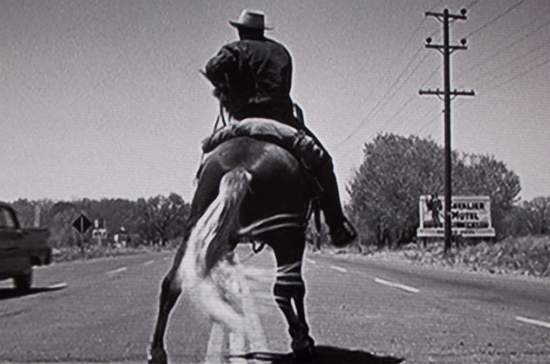
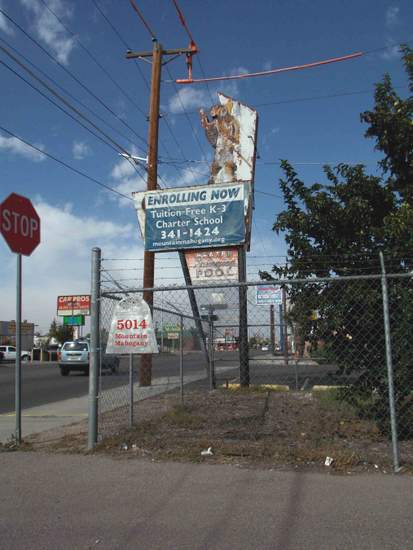
Another clue to the location was a cemetery that appeared in the same scene, adjacent to a dirt road that Burns followed after he’d made his dangerous highway crossing on Whiskey. But we could not find the cemetery. Later, after we were home, I may have found it after all, via a Google street view. We’ve included a Google image of the cemetery and a still from the film for comparison. If they’re one and the same, it may be that our mystery highway was once US 85 and has been so completely consumed by I-25, that no trace of the original road survives.
SCENE 4…The Bondi Hacienda
To find the location of the Bondi home, we realized it was far closer to the Sandias than we’d first imagined. In fact, the small adobe home was near the Tramway Road. Someone once told me that the tram was under construction during the filming and the crew was able to gain access to several film locations that would have previously been impossible to reach. The area, like most of ABQ is fast filling with new subdivisions. The ‘before & after’ view we offer here is as close as we could get, though the actual spot might very well be in the middle of somebody’s Great Room. We could find no trace of the little Bondi home as it appeared in the film, but we did spot one adobe home, very near the “Bondi place,” that bears some resemblance to the original, though it has been greatly expanded and ‘improved.’
SCENE 5…The Foothills, the Abandoned Cabin & the Sandia Peak
This is where things really got depressing. In the film, Burns escapes from jail, after breaking in to it and is unable to convince his pal Bondi to escape with him. Hearing the news, Sheriff Bondi stares east to the Sandias and speculates, “Cowboy, I bet you’re above the foothills already.” And that’s exactly where Burns rides to make his escape–up the foothills to the top of Sandia peak, where “a carpet of pine needles, all the way to Mexico,” awaits him.
In the 1961 production, Burns and Whiskey ride across open land and pinyon-juniper forest toward the mountain. The view is wide-open and in the distance, Albuquerque clings to the river valley below.
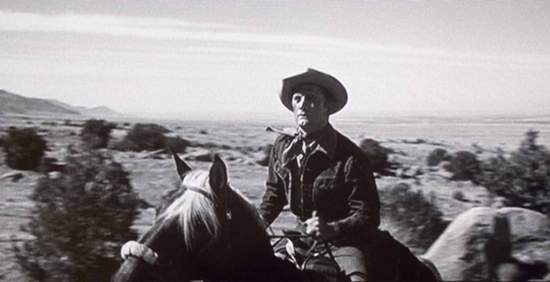
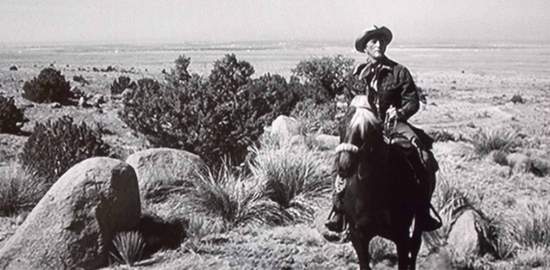
Today, the open space is disappearing fast. The open plain, the long rise from the river to the rugged terrain below Sandia Peak, is a maze of homes, and clearly many of them have been built in the last five years…Albuquerque’s east side is exploding, almost as rapidly as the sprawl to the west.
But while the topography of the long sloping plain toward the mountain offered little resistance to development, the complicated, boulder strewn geography below the peak should have made the construction of new McMansions more difficult…
What a foolish statement, and I should know better than that by now. The difficulty of the terrain only makes it more desirable for the wealthy few who can take on the challenge of building a home where none should be allowed. Albuquerque’s most extravagant—some might say obscene—residential structures now mark–or mar– Jack’s escape route.
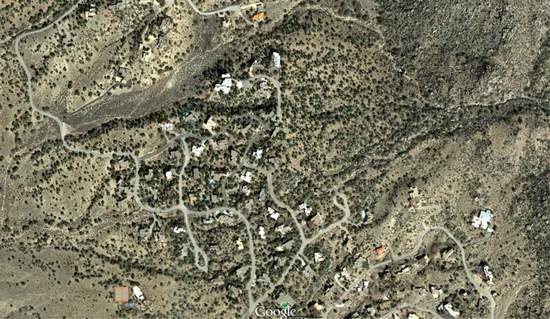
It seemed like such a quiet place in 1962. And in the film, he pauses near an abandoned adobe and stone cabin to water his horse and pause for reflection. Burns finds a comfortable place in the shade, already showing relief as he moves farther and farther away from the city. And despite signs that the law is getting closer, there is comfort in being back in the wilderness, as it was meant to be. As Jack saddles his horse, he sees a cougar perched on a boulder above him. He eyes the mountain lion with respect and appreciation. It’s the human predators that worry him.
In 2014, a mountain lion wouldn’t stand a chance here. The old derelict cabin is gone, replaced by a rash of trophy homes, some gated, and all of them ridiculously over-built and seemingly in competition for a page in ‘Architectural Digest.’ A quick Zillow check showed several homes in the area for sale, ranging in price from $800,000 to $1.25 million. I don’t think many of Sandia Height’s residents would look at Jack Burns as anything more than riff raff…a saddle tramp trespassing on their property.
Between the McMansions, up in the foothills, is a recreation area and on the day we were there, the parking lot was full. A bulletin board listed those pesky rules and regulations that Burns despised. And a road sign warned each approaching vehicle:
PARKED VEHICLES MUST DISPLAY
VALID RECREATIONAL PASS.
I wonder if Whiskey would count as a vehicle.
Duke City has changed since 1956, when Abbey wrote the novel, or 1962 when the story came to the screen. If Jack Burns found the city uninhabitable then, what would he think of Albuquerque and the American Southwest now? And what happens to people like Jack in 2014? Where do they go to escape the world today?….
“…over the great four-lane highway…the traffic roared and whistled and thundered by, steel, rubber, and flesh, dim faces behind glass, beating hearts, cold hands—the fury of men and women immured in engines.”
That’s Abbey and ‘Brave Cowboy’ in 1956. He was always ahead of his time. But it must have never given him any comfort.
POSTSCRIPT: We call this ‘volume 1′ because there are other film locations we’d like to visit in the future that we were unable to see on this visit. A late afternoon dust storm that reduced visibility almost to zero and shorter days cut our time short. So look for ‘volume 2′ at some point, hopefully by next summer…JS
To Read PART 2 of this story click here:
To comment, scroll to the bottom of the page.
Don’t forget the Zephyr ads! All links are hot!


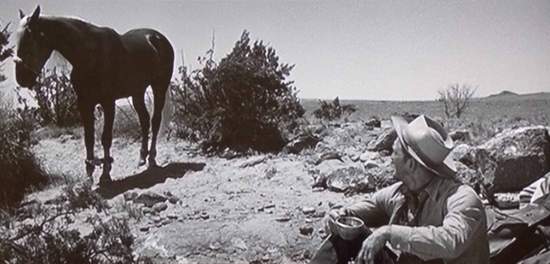
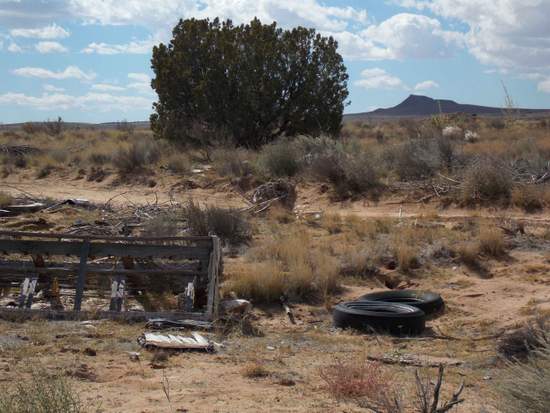

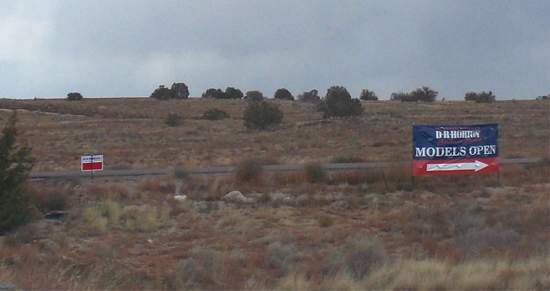
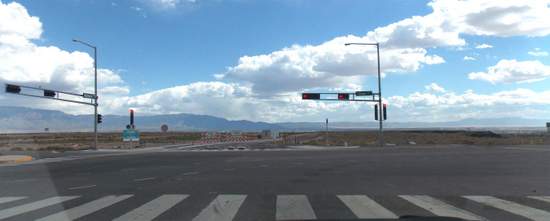
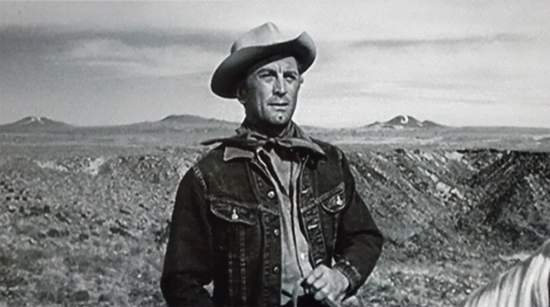
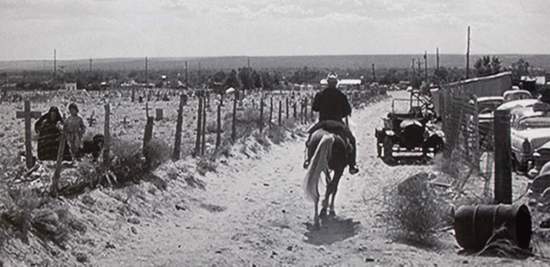
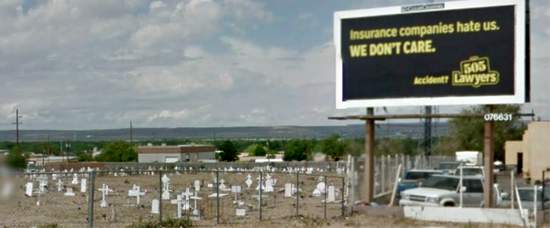
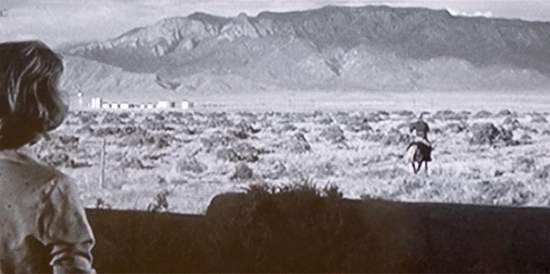
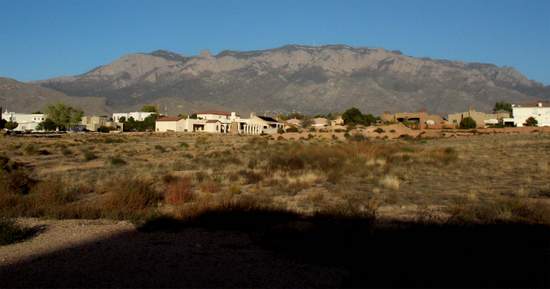
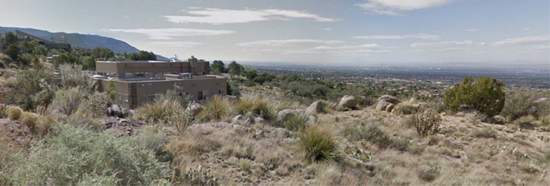
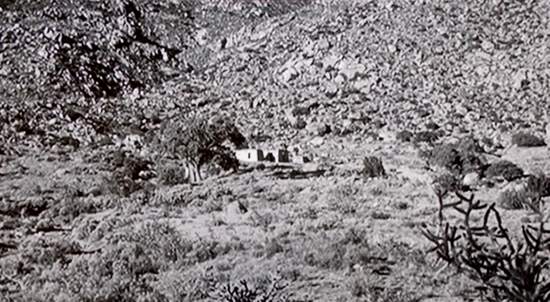
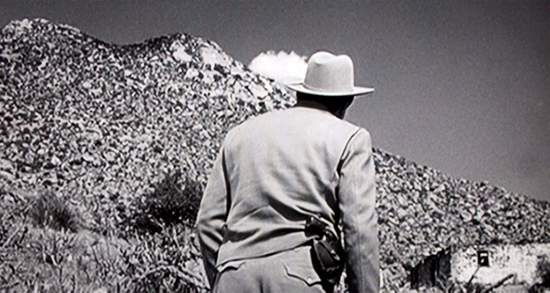
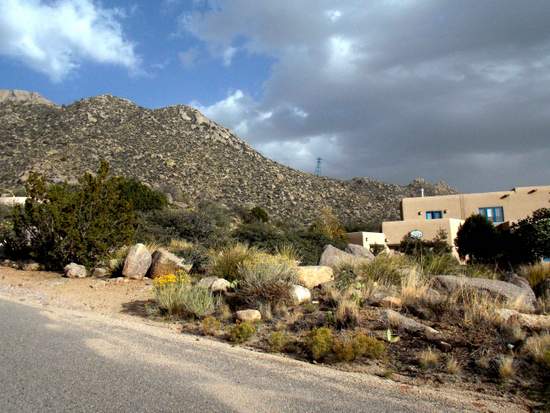
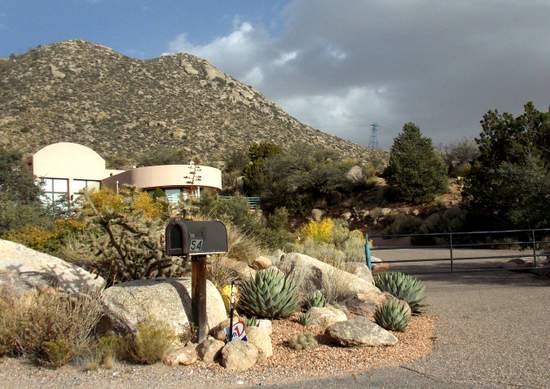
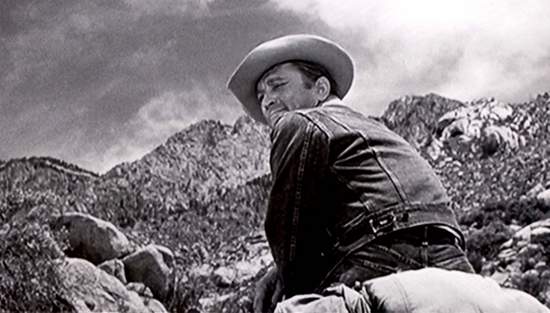
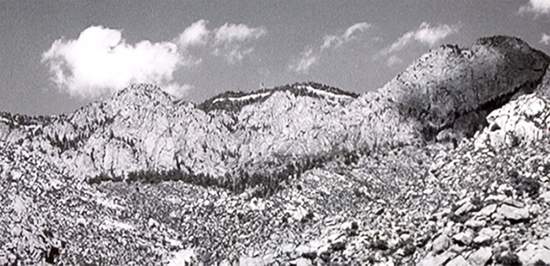
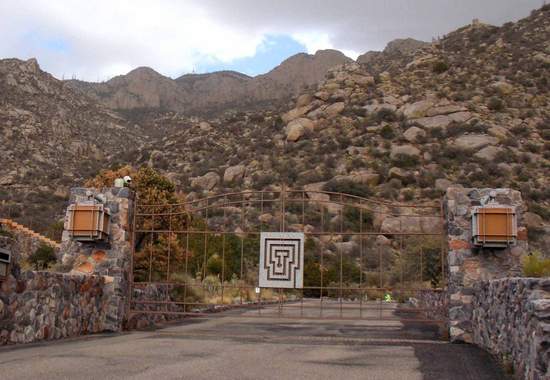
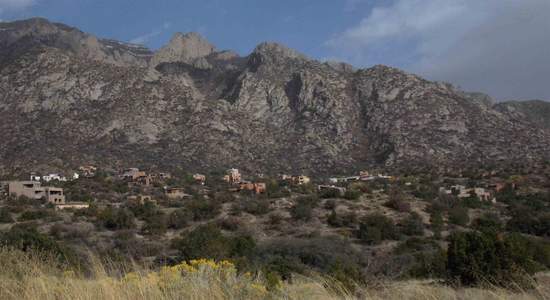
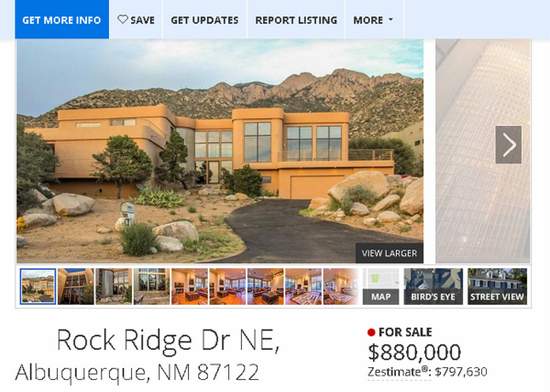

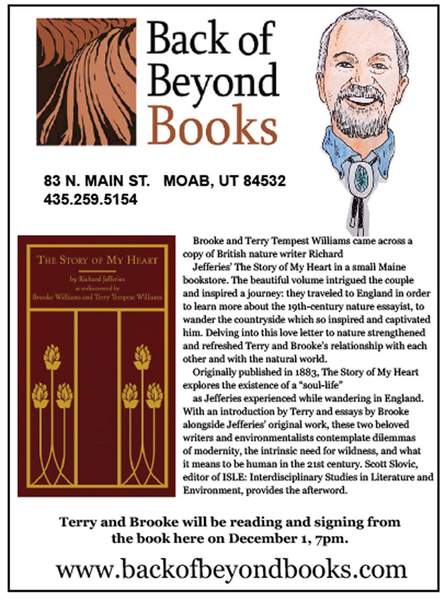


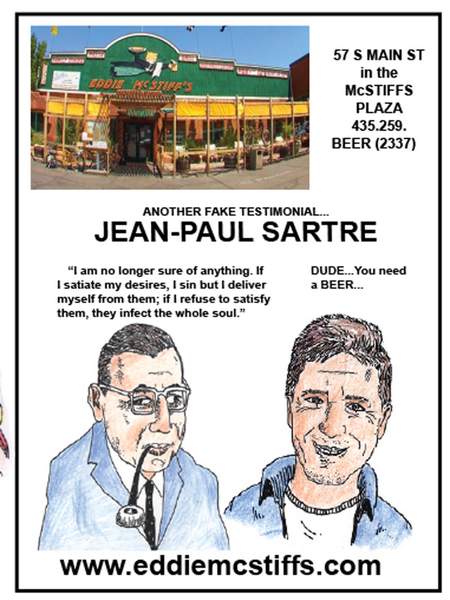

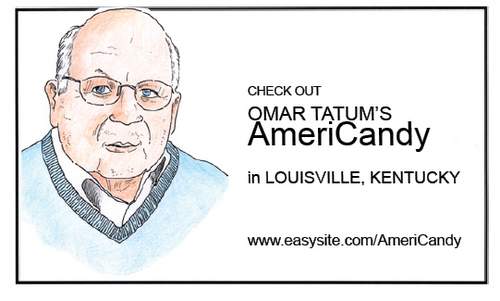
Fascinating, great, sad stuff.
“It seemed like such a quiet place in 1962.”
“And what happens to people like Jack in 2014? Where do they go to escape the world today?….”
That’s the question.
In the late 90s, I was a ranger at Petroglyph National Monument and lived on the west side near the mesa. During that time there was much emnity between the National Park Service who was charged with protecting and preserving the area and the City of Albuquerque who saw the Monument as an impediment to westward development. The locals viewed the west mesa as a convenient place to dump old appliances or shoot up the rock art. In the end. Senator Pete Domenici arranged for a corridor to be carved out of the monument boundary to allow a four-lane road, Paseo del Norte, to be built. That opened the floodgates to further development. Sadly, Petroglyph NM is becoming a city park surrounded by an urban metropolis, its sacred images made irrelevent by development.
I can think of few people who had the depth of insight Edward Abbey did. He saw what was coming so, so clearly. And your photographs confirm what he saw in spades. Sad but also powerful.
This was a great idea for a story.
There is still a wildness if you look for it. If you cannot find it in the without — look within.
Lonely Are the Brave was a staple on the channel 13 noon movie during my childhood in central Iowa. It seemed to be on 3 or 4 times a year all through the 60s and my brother and I watched as much of it as we could every time it was broadcast. In the summer of ’75, following our graduation from the University of Iowa, we discovered The Monkey Wrench Gang and became Edward Abbey enthusiasts. In ’78 we vacationed in New Mexico and Albuquerque, purchasing The Brave Cowboy and Fire on the Mountain at the UNM bookstore in trade paperback. It was only then that we realized that Abbey had written the novel that became the much beloved movie of our adolescent years. Within two years I realized my dream of moving west, relocating to Wyoming. Fourteen years later, while vacationing in Moab with my wife, I discovered a copy of the VHS release in Back of Beyond Bookstore. Once again it became a staple of my TV viewing, this time sharing it with my wife and small daughter, to whom it was just “Jack”. We watched it over and over again, ordinarily the kiss of death for my liking of a film (or song, or anything else). But “Jack” always seemed to show me something new. I also learned that Kirk Douglas, somewhat astonishingly, considered it his favorite role.
Now I own the DVD, but limit my viewing to avoid finally tiring of it. I believe it to be the best movie ever filmed of the western genre, even above Hud and The Wild Bunch. Today, more than 50 years after seeing it for the first time, it impacts my life almost daily, During the long Wyoming winter a Lee Storm Rider jacket identical to what Jack Burns wears throughout the movie, with no hand warmer pockets, shelters me, along with a short-brimmed, pinch-front hat. Speaking of which, where did Gina Rowlands put the money she sneaks inside Jack’s Storm Rider when he’s getting ready to head for the hills? There are no inside pockets in the dammed thing!
I think another viewing is near at hand. Keep up the good work.
Although I appear to be the same age as you, I only discovered this title recently, purchased it and now watch snippets of it daily and I find myself sometimes daydreaming of Jack Burns. This movie is magic and there’s such a gentleness of character that bleeds out of Jack Burns and onto the script and all the living things in the little world that he occupied.
awesome trek documenting the changes–super kudos to you. Wasn’t Albuquerque named in honor of some Spanish guy, the “Duke of Albuquerque”? Hence, Duke City. To view Petroglyph’s future, one need only look at Colorado Springs’ “Garden Of The Gods”. It used to be out in the countryside…the only thing that can save it now would be another Waldo Canyon Fire.
The scene of the Acme truck puled over, and being passed by a Southern Pacific freight train had to have been filmed possibly in California. The SP didn’t go to Albuquerque or Bernalillo and in the areas of New Mexico that it did operate, I don’t think the scenery fits. My guess is that all of the shots of the Acme truck at “Joplin, Missouri” and later at “Tulsa” were indeed shot in California. Certainly not southwest Missouri or northeast Oklahoma. the scenery looks more like the SP lines around LA, Chattsworth and towards Tehachapi. I’m a railfan from Texas and that SP diesel was still wearing their older “black-widow” scheme, already being replaced by SP grey and scarlet by 1962.
This movie came to mind just yesterday, Kirk Douglas’ 100th birthday. This photo essay was a real treat.
When Burns escapes jail, I see a Clark’s Department store in the scene. Did we actually have a Clark’s here in Albuquerque? I believe he started in Texas, and later moved to Roswell, but wasn’t able to find anything concrete on the location of a Clark’s locally.
Great job with the photos and notes. I always wondered where the locations were at ….and what they look like now.
thanks so much for your research on one of the best movies ever——
Thank you for finding some of the landscapes seen in Lonely Are the Brave. I rented the movie on DVD after seeing it mentioned at the Hollywood Southwest exhibit at the Albuquerque Museum early in 2017. It has become one of my favorites.
[…] [6] http://www.canyoncountryzephyr.com/2014/12/02/lonely-are-the-brave-revisited-by-jim-stiles/ […]
FANTASTIC article and photos! I just recently bought The Brave Cowboy when I learned Lonely are the Brave was based on a book. For the past two weeks I have been studying Goggle Maps looking for the locations described in the book… and here you had already done the work for me! I think it was great that Kirk Douglas filmed the movie at the actual locations in the book. So many times Hollywood will mutilate a book when they make a film of it. I look forward to a continuation of your research.
I watch this movie every week and have read the book. I recorded it off Tcm there is a great intro with Ben mancovitz and Robert Wagner.
I seem to recall once having read the real life story of Whisky, but I can’t find it now. Does anyone have info on that subject?
Many of the places in the Sandia mountains shown during Burns’ escape are familiar to hikers. The scenes are edited so he and his horse start at high elevation along the Crest Spur/ Upper La Luz trails running between the top Tram terminal and the Crest House, then the scenes drop to lower elevations in the Domingo Baca/TWA canyons situated below the Tramway. The Jeep is definitely tearing up Tramway roads. At the chase climax Burns and his horse charge up and out along the North Crest Trail at the beautiful limestone ledge where my daughters and i used to backpack to when they were little. A great place from which to watch the ABQ Balloon Fiesta while still in ones sleeping bag! Thanks for reminding US of this great movie….we have enjoyed watching it on this 19th dy of Furlough.
Another fan of the movie here…the scene location that has bugged me for years is where they shot the ending! We came to visit Albuquerque in ’69, before i-40, so i saw Tijeras Canyon before it all got changed by the interstate but i have never figured out where they were! I’m sorry your article doesn’t include that one!
I know that obsessed feeling, Jim, of trying to track down exact old places. That’s what I tried to Sherlock Holmes in the 1990s with as many of Abbey’s dozens of domiciles throughout his life, from PA to Tucson. Found bunches of them with my eyes, around Indiana & Home PA, Duke City, Taos, Moab, Tucson, & I forget many other places. Others I couldn’t get to, in Edinburgh, Provincetown, DC, & the most remote fire towers & national park temporary dwellings. I did get to his places in Sabino & Aravaipa canyons. I had to trash stuff so ruthlessly for my move to Austin that even my hard copies of docs on all this didn’t survive. I got everything I could into my book. That’s the advantage of writing books: When you’ve lost or forgotten it all, you can look it up in your own book.
Like Kirk Douglas himself, I chose this as my favorite movie. I feel, unwittingly, a bond with Kirk in that regard. I also felt connected to his character Jack Burns. The vast free ranging West was fast disappearing back nearly 60 years ago and much more today. To be able to take in a vista and not see a man-made development or simple object is more and more a luxury these days. I could tell it was painful for Jack to come to this realization that those vistas will soon be gone.
Jim – your introduction to the West sounds similar to mine. My first trip west out of North Florida was as a 14 yr old boy scout headed for Philmont scout ranch in northern New Mexico in 1960. As we crossed west Texas I’ll never forget those views of wide open spaces and distant buttes. Getting into New Mexico, the site and smells of ponderosa pine and juniper was an unbelievable sensation. I could go on and on but I’ll stop here and say thank you for your appreciation of West that matches mine.
I saw this movie at the drive-in theater when it first came out. I was about the same age as you were, Jim. Unfortunately, the film melted right during the critical scene where he is discovered in the cave. They did fix it and we got to see the rest of it. I had no idea that it was based on a book by Ed Abbey! Thanks for the great article.
Last night my wife and I watched the Kirk Douglas film “Lonely are the Brave” and afterwards came upon an article that you and Jim published back in 2014 in the Canyon Country ZEPHYR. I had not been aware of your interesting publication previously and found the article to be of interest because I too have become a bit obsessed with the film locations in the movie. I have been in Albuquerque for decades and spend a lot of time in the Sandias, running, hiking, biking and actually live on the boundary line of the Petroglyph National Monument. I also mountain bike and hike out along the volcanoes and just two days ago almost stepped on a rattlesnake! ouch! At any rate I have just begun to go through your back articles and wondered if there is a follow-up article to the original about the trip to Albuquerque and your efforts to locate specific filming sites for the movie. I hike all of the trails in the Sandias on a regular basis, but I was surprised that Jim neglected to mention the “Movie Trail” in the article. Back in the early 80s, the trail was mentioned in the Mike Hill trail guide to the Sandias. My wife and children hiked the trail as it is an off-shoot of the Piedra Lisa trail which is well known.It was built specifically for the movie. It sort of dead ends near the “Prow” a huge rock formation that is prominent in the movie. I was amazed that Kirk Douglas and his horse were actually able to climb some of these sections. I used to be a La Luz Trail runner and I have spent a lot of time on the rocks in that area, and it is incredibly rugged terrain. So, basically I wanted to tip you off about the Movie Trail, and secondly, I wondered if you know anything else about the actual filming on the slopes and how they were able to work with that horse on such rugged terrain. The 2014 article does not go into that in very much detail..
Thanks for the work you do and let me know if there was a follow-up article published or if you plan to do one.
I have not yet subscribed to your publication and will do so soon.
Regards,
Larry
I’ve lived in Sandia Heights for 25 years, near the base of the tram and only a couple miles from the filming location near the Piedra Lisa Trail. I introduced some of my neighbors to the film a few years ago, and we thought at the time that the filming location was at the mouth of Dominga Baca Canyon, where there is a stone cabin similar to the one in the film. At the time, I thought it would be fun to take screen shots of the film and go up there with the pictures on my phone to try to locate the exact location.
Last Saturday night I watched the movie with my wife, and it reinforced my desire to do that, so yesterday I went through the film taking shots of various scenes. Last night I sent a screenshot from the movie to another neighbor not telling him what it was, but that I had an idea. He responded: “Lonely are the brave” great movie. Did you ever hike on the “Movie trail”. They closed it a few decades ago. There was a pair of nesting peregrine falcon, so the blocked it and it never reopened. It’s near the entrance to Pedra Lisa trail head.’ I’d never heard of Movie Trail until today!
So I turned my focus to finding the Bondi Hacienda location. I also originally thought it was in what is now the far NE Heights, and thought the industrial site with the water tower to the north must have been the old Coronado Airport, but after spending a lot of time comparing screen shots to Google street view, I realized it couldn’t be. I’ve now concluded the the industrial site is actually the PNM power generating plant, which is still there and is just south of Paseo del Norte and west of Jefferson. It was built in 1958 when there was no other development in that area at all. You can see the power transmission lines headed south from the plant to downtown in the goodbye scene as Jerry bids Jack adios.
I spent some time today “driving around” using Google street view to line up features with that plant in the same place relative to the Sandias as it is in the film. My best candidate for the location that’s consistent with shots from all angles in the film is the NE corner of the intersection of Edith Blvd and Tyler Rod NE, where there is a sign for the Salida del Sol subdivision. I hope this turns out to be the location, because there’s a little park where the house would have been. The only way to know for sure would be to go to the actual location to line of the power plant with the mountains (the Google street view images aren’t good enough). Or to find old photographs, or to find old records like construction or demolition permits.
And it’s cool that Larry Larrichio just commented. Larry, I just sent you a Facebook request. I’ve been posting about this on FB. I’m also part-time UNM faculty.
All the best,
Mark
Regarding the comment about mountain lions, the Journal had a story just the other day about a mountain lion in a back yard at Eubank and Menaul. I also heard tell of a radio tracked lion that was tracked through Albuquerque, with no sightings reported.
FYI: the movie is now showing on Screen Pix Westerns on Xfinity On Demand until 12/31/20. Even though ScreenPix is a free movie channel for most packages (replacing Starz Encore) it’s found through ‘Premium Channels’.
Seems like most folks posting here own the movie but in case they know others that don’t.
I too would like to know what happened to Whiskey both during and after filming. I shuddered during her harrowing struggles over incredibly horse unfriendly terrain. Just think how PETA would react these days!
I also wonder about the rock slide area where Jack is leading Whisky up the slope with small boulders tumbling down. It did not appear that the horse was injured in any way, but it certainly was a heart-wrenching scene. I believe that scene was shot on the Movie Trail which was constructed for the film. I plan to go up that trail soon if it is not deep in snow just to get an idea how treacherous that section is.
I wonder what ever happened to the old woman and child in the graveyard, alongside the junk cars. I wonder if they were “extras” earning SAG scale, or real people who just happened to be there at that moment.
great work, thanks for taking the time.
Watching this live now on UK tv. Like so many on this site I long for those simpler times. Ace job of research etc. Keep up the good work.